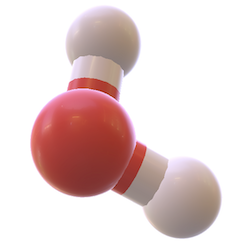Pathway: Molybdenum cofactor biosynthesis
Reactions in pathway: Molybdenum cofactor biosynthesis :
Molybdenum cofactor biosynthesis
Molybdenum cofactor (MoCo) is needed by three enzymes in humans: sulfite oxidase, xanthine oxidase and aldehyde oxidase. The pathway of its synthesis is so conserved that plants and bacteria can readily use human enzymes. Bacteria, however, diverge after the first three steps from this path and their final MoCo differs from that of the eukaryotes. Plants and animals have also developed a refinement of their MoCo which is needed for the function of their xanthine and aldehyde oxidases. This means, in humans we find sulfurated instead of desulfurated molybdenum cofactor on these two enzymes (Schwarz 2005; Schwarz, Mendel, Ribbe 2009).
Vitamins are a diverse group of organic compounds, classified according to their solubility, either fat-soluble or water-soluble, that are either not synthesized or synthesized only in limited amounts by human cells. They are required in small amounts in the diet and have distinct biochemical roles, often as coenzymes (cofactors). The physiological processes dependent on vitamin-requiring reactions include many aspects of intermediary metabolism, vision, bone formation, and blood coagulation, and vitamin deficiencies are associated with a correspondingly diverse and severe group of diseases. Metabolic pathways for water-soluble B group and C vitamins, and for fat-soluble vitamins A, D and K are annotated in Reactome, covering processes that convert dietary forms of these molecules into active forms, and that regenerate active forms of vitamin cofactors consumed in other metabolic processes.
Metabolic processes in human cells generate energy through the oxidation of molecules consumed in the diet and mediate the synthesis of diverse essential molecules not taken in the diet as well as the inactivation and elimination of toxic ones generated endogenously or present in the extracellular environment. The processes of energy metabolism can be classified into two groups according to whether they involve carbohydrate-derived or lipid-derived molecules, and within each group it is useful to distinguish processes that mediate the breakdown and oxidation of these molecules to yield energy from ones that mediate their synthesis and storage as internal energy reserves. Synthetic reactions are conveniently grouped by the chemical nature of the end products, such as nucleotides, amino acids and related molecules, and porphyrins. Detoxification reactions (biological oxidations) are likewise conveniently classified by the chemical nature of the toxin.
At the same time, all of these processes are tightly integrated. Intermediates in reactions of energy generation are starting materials for biosyntheses of amino acids and other compounds, broad-specificity oxidoreductase enzymes can be involved in both detoxification reactions and biosyntheses, and hormone-mediated signaling processes function to coordinate the operation of energy-generating and energy-storing reactions and to couple these to other biosynthetic processes.
